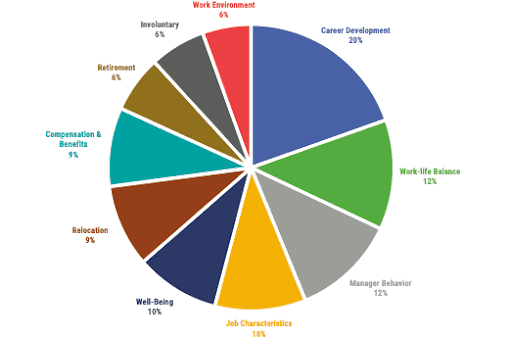One of the most widely accepted frameworks for strategy execution in an organization is Objectives and Key Results, often abbreviated as OKRs. For the success of an organization, each team and department in the entity should work towards the fulfilment of its overall business plan. The short-term objectives should align with the key results, and a consistent feedback mechanism should ensure performance management.
OKR is a management method that has helped organizations like Google and Intel align their team members with the right goals for their growth and success. It also steered LinkedIn to a market capitalization of over $20 billion.
The importance of implementing the goal-setting framework for an entity cannot be overstated. However, it is essential to understand that each organization differs in its size, goals, mission, core values, etc. Hence, your OKR tool has to align accordingly.
If you plan to roll out OKR for your team, the market has many tools to offer. These tools differ in their functionalities and the issues they prioritize. Hence, finding the right software for your business becomes quintessential. The selection process begins with obtaining an understanding of the framework and finding the right match to create a high-performance culture.
What is an OKR Management Platform?
Goal setting is a quintessential step in an organization’s journey to success. For most organizations, setting objectives and Key results begins with a simple spreadsheet. However, as an organization grows, it branches out in multiple directions, with each team contributing to the overall business strategy.
OKR software provides a convenient tool for setting goals, tracking progress, and measuring results in an organization. It also offers a platform for communication with subordinates and peers to ensure that the challenges are tackled before they become critical.
Also read: How company culture shapes employee engagement?
OKRs help organizations drive real performance by making employees accountable for their activities. Our expert guide on OKRs talks about how businesses just like yours can get started with them.
Take a look here. “The Ultimate Guide To OKRs And Templates.”
Best OKR software for your business
An OKR software follows the objective and key results methodology and ensures the fulfilment of business goals. With so many OKR tools in the market, choosing the right one for your business can become a tedious task. However, considering a few factors can help you find a perfect match for your organisation.
User-friendliness
Quality of user experience is the most important factor in the success of an OKR management software. The OKR software for your business should have a simple, clean interface that attracts and engages the users. The interface should be easy to navigate and use, even by members who lack a strong grip on the technology.
Getting new users on the platform, editing objectives and key results, and tracking progress should be hassle-free. The OKR tools should have a responsive design that offers optimum performance irrespective of the user device. The layout and instructions should be clear, even for new users. Also, you need to check the kind of customer support offered by the developers.
Size of the business
The size of your enterprise is an essential consideration when choosing the best OKR software for your business. You need to consider the number of members who will use the software. Also, the prospective size of the organization plays a critical role. Hence, plans for scaling up your company in the near future must be taken into consideration before choosing the OKR tool.
Business goals
Every organization has different reasons for choosing OKR tools. Your choice will depend on the type of organizational culture and the business needs you aim to fulfil.
To understand your requirements, you need to assess:
- What are the key benefits that you wish to achieve from OKR framework execution?
- Which of these goals are immediate?
- What is the time frame for the other goals that you want to accomplish?
- What are the challenges you plan to tackle with the OKR tool?
The answer to the above question will help you understand your requirements and streamline the selection process.
Some reasons for implementing OKR software are:
- To set clear and specific business goals
- To align employee performance with the business objectives
- To enable employees to measure their contribution to key business results and boost engagement
- To create accountability and empowerment for the workforce
- To facilitate clear communication between management and team members
Also read: OKR Goal Setting For Successful Businesses
Coaching
Despite the popularity of the OKR framework, many organizations are unaware of the tools and the best OKR practices. Even the most effective OKR tool may fail to create the desired impact for your business if it is not executed and used in the right manner.
To use the OKR management software for your enterprise, you need to be aware of the OKR framework. Learning from a team of experts will enable you to set the right goals and leverage the best OKR practices for the success of your organization.
The need for coaching becomes paramount if you are implementing OKR tracking software in your business for the first time. The key to a successful OKR strategy execution is understanding the framework and the OKR software.
In the absence of a thorough understanding, an organization continues to use the OKR tools as an extension of their routine activities, which brings no productivity boost. Hence, it is essential to find software that also offers coaching by a team of experts for its successful execution in the entity.
Integration
Toggling between different software can be a cumbersome task. It can hinder employee productivity and can also make the OKR tool ineffective. Hence, to maximize the potential of your OKR tracking software, you need to ensure that it offers integration with other applications.
Take a look at the existing tools used by the various departments and make a list of the software that the product sales or marketing team would like to use in the future. Choose an OKR software that offers integration with these applications.
This will ensure that the team members can link their efforts to the business strategy and results. Also, the OKR tracking software should provide seamless integration with performance management tools within the organization.
Also read: How To Maximize The Potential Of OKRs?
Pricing
The price of OKR management software is an essential consideration. The pricing should be transparent, with no additional or hidden charges. However, it should never be considered the sole determinant when choosing a software solution.
Apart from the price, analyse whether the tool offers value for its investment. This requires considering factors like the size of the company, the functionality offered, integration with other tools, coaching by experts, etc.
For small businesses, pricing can be a critical factor, as the organization is still in its early stages and may suffer from financial restrictions. A suitable solution in such a case is to consider the desired functions and features to set a budget accordingly.
This will allow you to make a comparison between different software that offers the functionalities and fits your budget. Also, it is advisable to try out a free trial version of the software before you make the ultimate commitment. This will help you understand how well the OKR tracking software fits your organizational needs.
Data protection
Irrespective of its size and business objectives, data is the most valuable asset for any organization. Hence, it needs to be protected from data leakage and confidentiality breach.
Once you roll out OKR software, it becomes an ultimate part of your organization. The process of goal setting involves sharing a lot of critical organizational information and data. Hence, it is important to ensure that this information remains confidential and well protected.
Before you choose the best OKR software for your business, you need to ensure that it complies with the major data protection and GDPR guidelines.
Conclusion
The OKR management platform enables an organization to achieve unprecedented results through clear goal-setting and performance evaluation. It allows each team to contribute to organizational success by focusing their efforts on the business objectives and key results.
The OKR tools make the strategy execution process more convenient by providing a platform for continuous evaluation and monitoring. It helps each member to track their progress to the organizational goals and boosts employee morale and engagement. Also, it creates a sense of accountability on the part of employees as they can see their contribution to the organisational objectives.
OKR tools enable goal-setting, as well as continuous monitoring to ensure that any discrepancies are addressed at the earliest. It also provides a means for consistent communication with subordinates, as well as peers. Hence, OKR software bridges the gap between strategy execution and performance evaluation and helps in achieving organizational results.
However, the best OKR management platform for each organisation depends on the specific requirements, size, functionality, budget, and software integration needs of the entity. Hence, for a successful OKR execution, an organisation needs to find the balance between available financial resources and desired functions.







![Customer Success OKRs [Importance & Examples]](https://engagedly.com/wp-content/uploads/2020/11/Customer-service.png)
 The benefits associated with OKRs have made it a popular goal-setting tool among all organizations. Here are some of them:
The benefits associated with OKRs have made it a popular goal-setting tool among all organizations. Here are some of them:

















